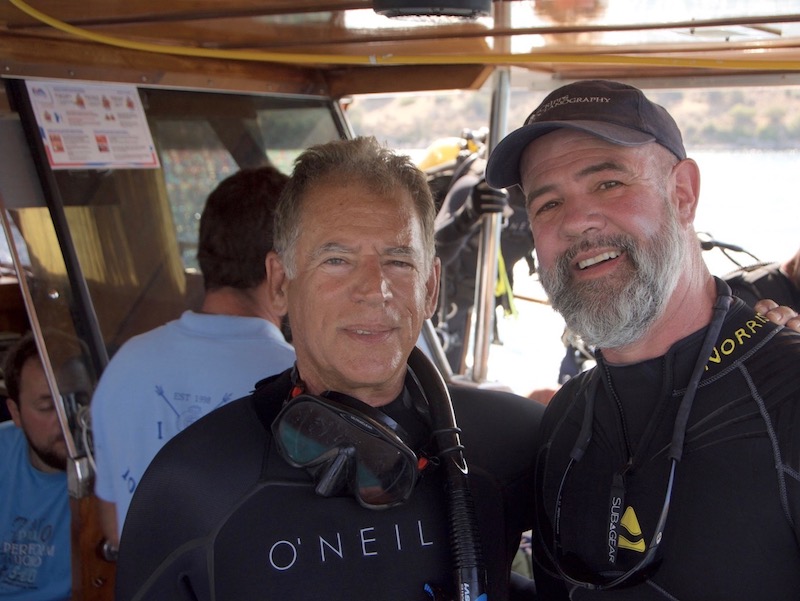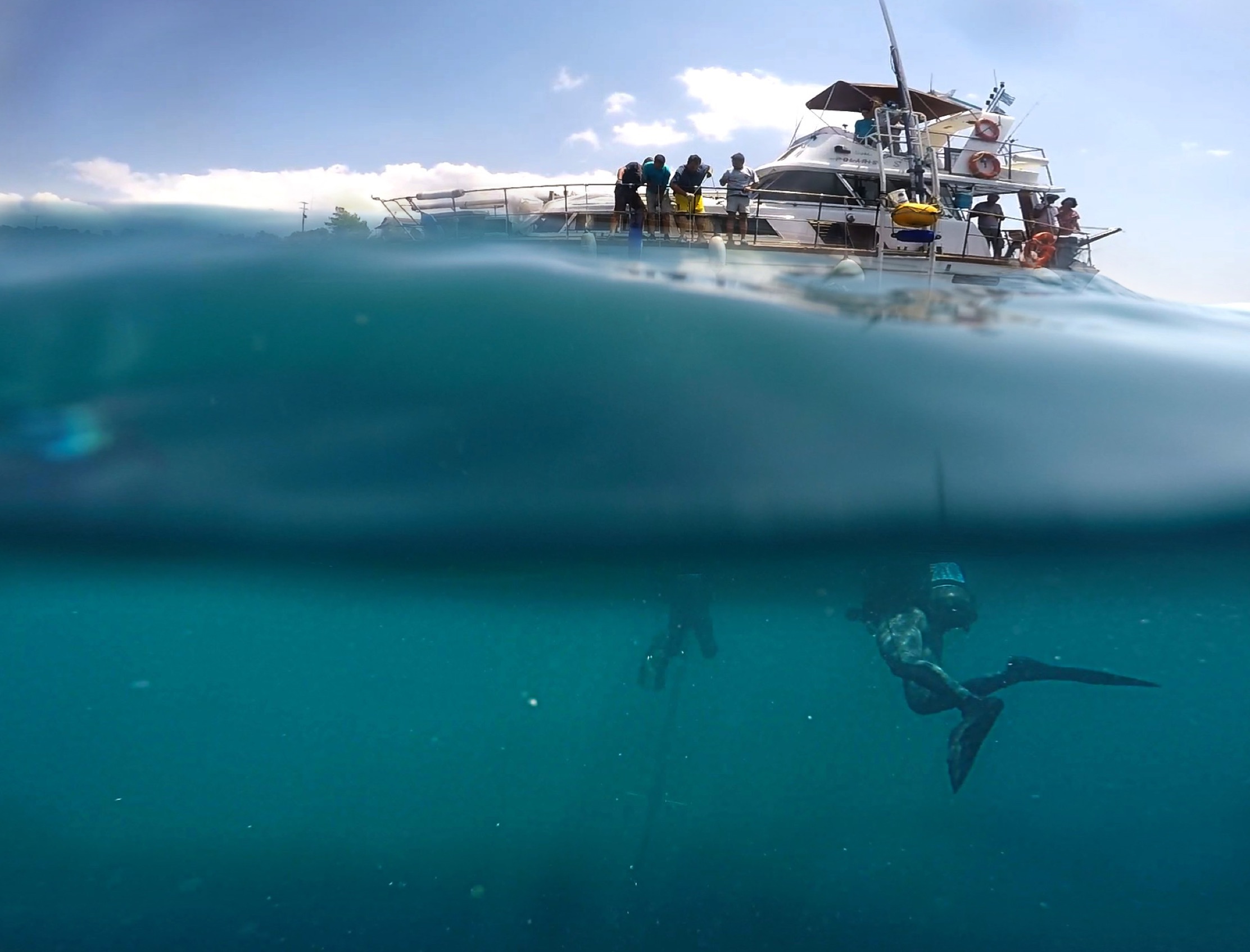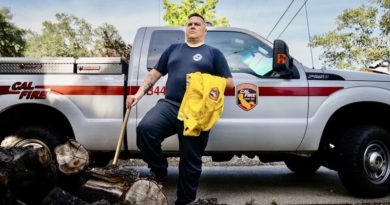Daily Business Report-June 5, 2017
The center will investigate key underwater and coastal archaeological sites around the world. (Courtesy of Scripps Institution of Oceanography)
UC San Diego Launches Scripps
Center for Marine Archeology
UC San Diego News Center
Scripps Institution of Oceanography and the Department of Anthropology have joined efforts to launch the Scripps Center for Marine Archaeology (SCMA) at UC San Diego.
Researchers with the Scripps Center for Marine Archaeology will conduct fieldwork at key underwater and coastal archaeological sites around the world, studying the influence of marine environments on human cultures.
“For more than a century, Scripps Oceanography has been at the forefront of scientific exploration and discovery of the ocean, and for years there has been a demonstrated interest in opening a center focused on marine archaeology,” said Scripps Director Margaret Leinen. “The center will help advance marine archaeology as a field, and on a larger scale, will help scientists explore ways to better understand and protect our planet — a strategic initiative here at UC San Diego.”
“As much as the marine environment influences human culture, it works the other way around too — cultures influence their environments,” said Carol Padden, dean of UC San Diego’s Division of Social Sciences. “With social scientists and marine scientists working together in one center, we will be studying the relationship between society and the sea from both angles, increasing our knowledge of the past for a better future.”
The Scripps Center for Marine Archaeology was co-founded by Scripps geophysicist Walter Munk and former Institute of Geophysics and Planetary Physics Green Fellow Damien Leloup, who began his career aboard research vessels Calypso and Alcyone working with Jacques Cousteau. Munk and Leloup raised over $400,000 in seed donations and secured approval to form the center in September 2015.

Following the groundwork laid out by Munk and Leloup, Scripps oceanographer John Hildebrand and Division of Social Sciences anthropologist Thomas Levy will be the first leaders of the center. SCMA also includes a number of collaborators and scientists from such disciplines as oceanography, marine technology, sedimentology, geomorphology, climate sciences, environmental sciences, anthropology, and archaeology.
“The goal is to integrate the expertise in various UC San Diego departments, like anthropology, with the expertise here at Scripps Institution of Oceanography that focuses on the ocean,” said Hildebrand, co-director of SCMA. “By putting these two together, we have a really powerful force for studying both people on land that are using marine resources and also cultural resources that are now submerged.”
“It all came together thanks to the vision of Walter Munk, and with his support, we got on a roll,” said Levy, co-director of SCMA and director of the Center for Cyber-Archaeology and Sustainability at UC San Diego’s Qualcomm Institute. “It’s really essential to do collaborative work between archaeologists and marine scientists. We have the best of both worlds here at UC San Diego and it couldn’t be better.”
SCMA differentiates itself from other marine archaeology programs because it won’t focus solely on shipwrecks, the domain of nautical archaeology. Rather it will explore human societies in coastal zones and adaptation processes to climate and environmental changes.
The researchers note that over the past 20,000 years there have been significant environmental changes, including warming of the planet and rising sea levels. By understanding the role of the oceans in past human cultural development, the scientists can put the present into a long-term context.
“The seashore that we explore, use, and experience today is not the same as in the past, so we can look at the past to understand and improve our solutions to the present problems that we are facing with climate change,” said environmental archaeologist Isabel Rivera-Collazo, an SCMA collaborator.
Rivera-Collazo is a new joint hire at UC San Diego, where she serves as an assistant professor both at Scripps Oceanography and the Department of Anthropology. Levy and Scripps geophysicist Lisa Tauxe initiated this new cross-campus position, which bridges Scripps and the Division of Social Sciences.
Researchers with the new center will explore underwater sites through the use of traditional diving apparatuses as well as with innovative technologies such as remotely operated vehicles, seabed coring, and various sonars to help detect cultural remains on and beneath the seafloor.
SCMA investigators have already been involved in several expeditions, including Leloup’s participation in the international Vietnam Maritime Archaeology Project (VMAP) led by Flinders University Maritime Archaeology Department in the spring of 2016, and a scientific expedition in Greece to study the Late Bronze Age collapse of the Mycenaean civilization led by Levy and Scripps paleobiologist Richard Norris in the summer of 2016.
Over the next two years, the center plans to launch a series of research projects in the eastern Mediterranean, southern Peru, Puerto Rico, Belize, and along the California coast.
“There are hidden coastlines all around the world where civilizations and cultures flourished, and so that’s the place that we want to sample when we do these studies,” said Levy, holder of the Norma Kershaw Chair in the Archaeology of Ancient Israel and Neighboring Lands at UC San Diego. “One of the reasons we’re especially interested in the Old World is because many of the developments of early civilizations occurred there, and it’s a really hot area for research.”
The Scripps Center for Marine Archaeology envisions serving as the central research hub and institutional platform for students, faculty, and other researchers working on understanding the relationship between people and the sea, as well as climate and environments worldwide. The center plans to share its discoveries through a state-of-the-art database and website, publications and peer-reviewed studies, press releases, and possibly through future exhibits at Birch Aquarium at Scripps.
“As we ramp up the Scripps Center for Marine Archaeology, we want to have public participation, and this will include seminars and workshops for people to come and get involved,” said Hildebrand.
__________________
USD Awarded $599,666 to Enhance
Student Learning Through Research
The National Science Foundation has awarded the University of San Diego $598,666 to fund a project to enhance college student learning through course-based research experiences (CURE) that provide broader research exposure to more students than current apprenticeship and internship models.
The three-year award will support a team of 15 faculty from 12 institutions, including research intensive universities, undergraduate-focused universities, and community colleges.
The proposal entitled, “An Interdisciplinary Faculty Community Using a Protein-focused Course Based Undergraduate Research Experience (CURE) to Improve Student Learning,” will be directed by University of San Diego Chemistry and Biochemistry faculty Ellis Bell, PhD; Jessica Bell, PhD; and Joseph Provost, PhD.
“The aim of this project is to transform the impact of teaching laboratories at participating institutions by incorporating quantitative, authentic research into the classroom and curriculum,” said Dr. Ellis Bell.
“This type of high impact teaching has been shown to help students increase their enthusiasm for learning science and earning advanced degrees in the sciences, as well as enhancing of critical thinking skills,” said Dr. Provost.
The project will test two aspects of CURE frameworks to directly affect the learning environment in 56 CUREs courses, involving approximately 1000 students at participating institutions.
“In addition to creating an active community of faculty who are implementing course-based research experiences for students taking classes in biochemistry, biology and chemistry, we will be able to provide data that will facilitate the efficient and effective creation of new CUREs across fields,” said Dr. Jessica Bell.
__________________
Navy Debuts Drone-Based
Mine Detection System
Researchers at the Naval Surface Warfare Center are using drones to detect submerged and buried mines using a system sponsored by the Office of Naval Research’s TechSolutions program.
Designed to safely remove explosive ordinance in both coastal surf and shallow-water, the Mine Warfare Rapid Assessment Capability system consists of a one-pound quadcopter that carries an ultra-sensitive magnetometer for mine detection.
“This technology will help sailors and Marines who are approaching a beachfront to rapidly clear, or at least determine the location of, mines or other hazards that are in their way,” said Master Chief Matt Matteson, Office of Naval Research commander. “It could potentially save a lot of lives.”
The system provides a real-time aerial complement to existing underwater mine-detection capabilities and can deliver real-time search data to a sailor’s handheld Android tablet. The system enables teams to find and quickly dispose of mines and metal obstacles in coastal surf zones and shallow-water zones. It’s equipped with a unique magnetometer sensor suite that uses complex algorithms to differentiate between objects.
“We took our inspiration from a stationary scanning system developed by BDS,” scientist Rosemarie Oelrich said. “It was sensitive enough to not only detect weapons, but identify the hidden location of the object on a person and the angle in which it was oriented — a knife in a front pocket or gun turned sideways, for example. We flipped that concept on its head. Instead of a stationary system detecting moving objects, we have a moving system detecting relatively stationary objects.”
__________________
Coldwell Banker West Acquires
Former McMillin Realty Company
Coldwell Banker West, one of the largest real estate companies in San Diego County, has announced the acquisition of Better Homes and Gardens Real Estate McMillin Realty in San Diego. Terms of the deal were not disclosed.
The acquisition swells the number of Coldwell Banker West sales agents to more than 600 and will reinforce the company as a dominant player in the San Diego County resale market, according to Peter Mendiola, Coldwell Banker West president.
The company, founded 10 years ago and based in Chula Vista, now operates six offices, including offices in Bonita, EastLake and El Cajon, with plans to open an additional office this summer in Downtown San Diego.
Coldwell Banker West acquired Better Homes and Gardens Real Estate McMillin Realty from Vince and Nick Guttuso. In January 2016, McMillin Realty was sold by Scott McMillin to the Guttusos, who renamed the company Better Homes and Gardens Real Estate McMillin Realty. McMillin Realty had operated in San Diego since its founding in the early 1970s by Scott’s father Corky McMillin.



